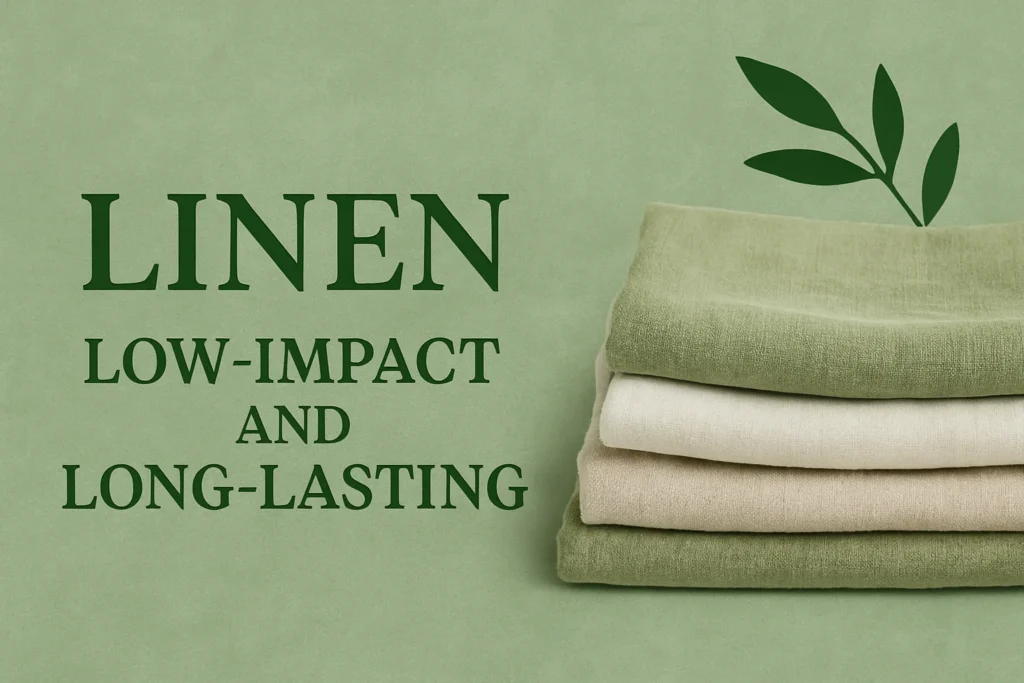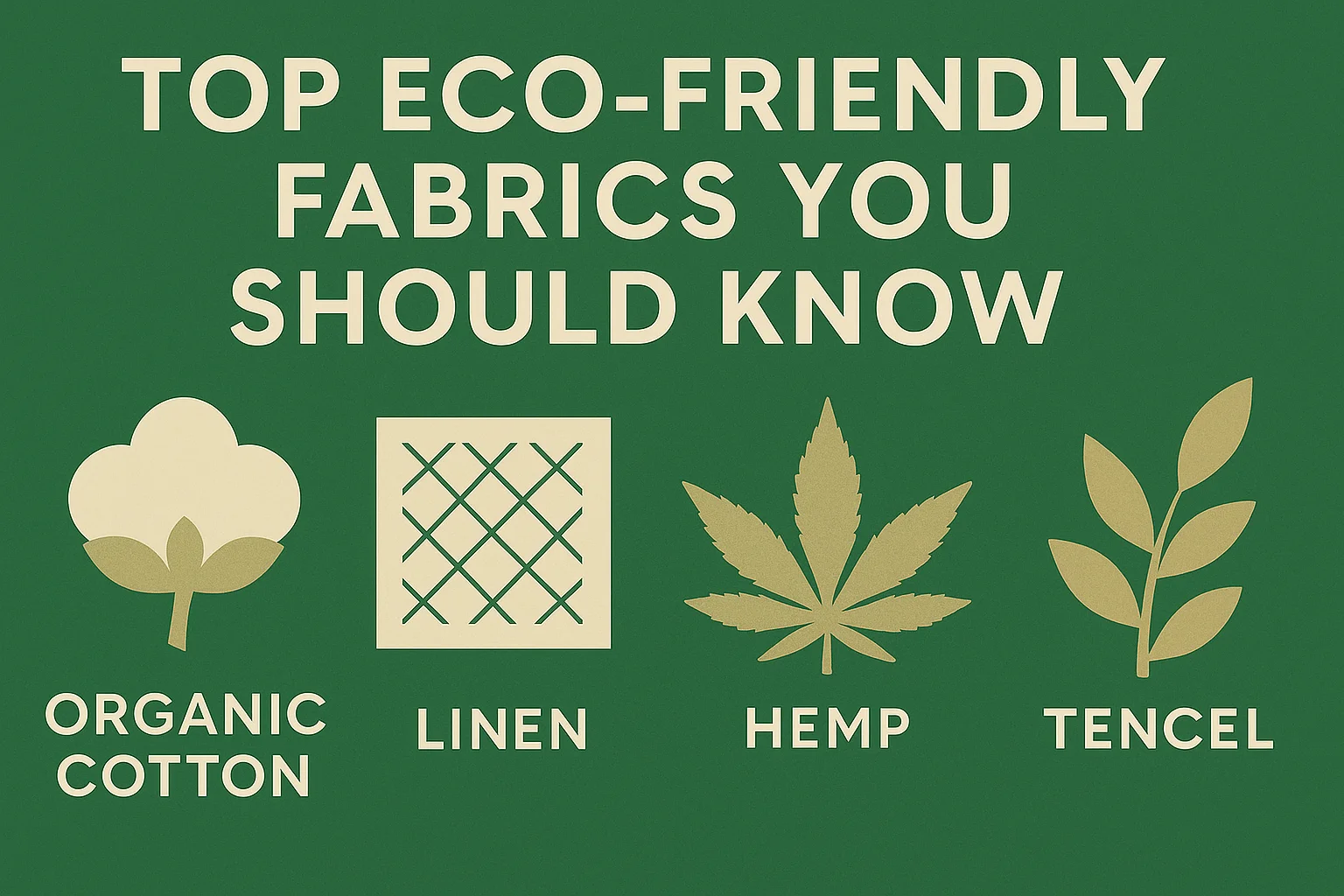Fashion isn’t just about colors and cuts anymore — it’s about values. Today, more shoppers are realizing that their clothing choices can either harm or help the planet. That’s why eco-friendly fabrics are gaining global attention. These materials not only look and feel great but also have a lighter environmental footprint.
If you’re wondering where to start, platforms like Eco Gear Guides are perfect for exploring fabrics that align with both your style and sustainability goals. In this article, we’ll uncover the most sustainable fabrics worth knowing, their advantages, and how you can easily integrate them into your wardrobe.
Why Eco-Friendly Fabrics Matter More Than Ever
The textile industry is one of the most resource-intensive in the world — consuming huge amounts of water, energy, and chemicals. Switching to eco-friendly fabrics can:
- Reduce water and energy usage
- Lower chemical pollution in soil and waterways
- Support ethical manufacturing
- Create longer-lasting clothing, reducing landfill waste
Organic Cotton – The Cleaner Cotton Choice

Why It’s Better:
Organic cotton is grown without synthetic pesticides or fertilizers, keeping toxins out of the soil and water systems. It also uses far less water than conventional cotton farming.
Example You Can Relate To:
The brand Organic Basics produces underwear and basics made from certified organic cotton, offering comfort without harming ecosystems.
| Benefit | Environmental Impact |
|---|---|
| No pesticides | Protects biodiversity and farmer health |
| Water-efficient | Saves thousands of liters per garment |
| Fully compostable | Leaves zero long-term waste |
Hemp – The Sustainability Powerhouse
Why It’s Better:
Hemp grows rapidly, thrives in various climates, and naturally resists pests. It improves soil health and requires little water.
Example You Can Relate To:
Eco Gear Guides often recommends hemp workwear and casual clothing, praising its durability and resistance to wear-and-tear — ideal for long-lasting fashion.
Tencel (Lyocell) – Soft on Skin, Kind to Earth
Why It’s Better:
Made from sustainably sourced wood pulp, Tencel is produced in a closed-loop system that reuses nearly all the water and non-toxic solvents.
Example You Can Relate To:
The eco-brand Amour Vert uses Tencel for drapey tops and dresses, proving that sustainable fabrics can also look effortlessly elegant.
| Fabric | Water Use | Chemical Use | Comfort Level |
|---|---|---|---|
| Tencel | Low | Minimal | Silky-soft |
| Polyester | High | High | Moderate |
Linen – Low-Impact and Long-Lasting

Why It’s Better:
Linen is made from the flax plant, which grows in poor-quality soil and needs minimal irrigation. It’s naturally breathable and becomes softer with each wash.
Example You Can Relate To:
Brands like MagicLinen turn flax fibers into stylish dresses and bedding, offering pieces that can last for decades when cared for properly.
Recycled Fabrics – Fashion’s Second Chance
Why It’s Better:
Recycled polyester, nylon, and cotton reduce the need for virgin materials while keeping plastic bottles and old garments out of landfills.
Example You Can Relate To:
Patagonia makes jackets and fleeces from recycled fishing nets and post-consumer plastics — blending performance with sustainability.
Bamboo Fabric – A Fast-Growing Favorite
Why It’s Better:
Bamboo is one of the fastest-growing plants on Earth, requiring no pesticides and very little water. However, sustainability depends on how it’s processed — mechanical production is the eco-friendlier option.
Example You Can Relate To:
Eco Gear Guides points to Boody for bamboo-based essentials, which use a closed-loop manufacturing method to reduce waste.
Read More : Best Reusable Kitchen Items for a Greener Home
Quick Eco Fabric Comparison
| Fabric | Growth Speed | Water Use | Durability | Biodegradability |
|---|---|---|---|---|
| Organic Cotton | Moderate | Low | High | Yes |
| Hemp | Fast | Very Low | Very High | Yes |
| Tencel | Fast | Low | High | Yes |
| Linen | Moderate | Low | Very High | Yes |
| Recycled Polyester | N/A | Low | High | No |
| Bamboo (mechanical) | Very Fast | Low | High | Yes |
How to Avoid Greenwashing in Fabrics
Not every product labeled “eco-friendly” truly is. To ensure you’re buying the real thing:
- Look for GOTS certification for organic fabrics
- Choose OEKO-TEX certified textiles to avoid harmful chemicals
- Check for FSC labels on wood-based fabrics like Tencel
- Research the brand’s sustainability reports
Everyday Ways to Embrace Sustainable Fabrics
- Start Small – Replace worn-out basics with eco-friendly alternatives.
- Check Fabric Labels – Choose certified organic or recycled materials.
- Repair Before Replacing – Extend the lifespan of your clothes.
- Buy Second-Hand – Reduce demand for new production.
- Follow Expert Guides – Eco Gear Guides curates trusted brands for every lifestyle.
Conclusion – Every Fabric Choice Shapes the Future
Choosing eco-friendly fabrics isn’t just about keeping up with trends — it’s about taking responsibility for our environmental footprint. Whether you invest in breathable organic cotton, durable hemp, elegant linen, or resource-saving recycled fabrics, your wardrobe can make a difference.
As Eco Gear Guides reminds us, sustainability is about progress, not perfection. Every mindful purchase adds up, paving the way for a cleaner, greener fashion industry.
Read More : How to Build a Capsule Wardrobe Sustainably
FAQs
Which eco-friendly fabric lasts the longest?
Hemp and linen are known for their exceptional durability.
Can I mix eco-friendly fabrics with synthetic ones?
Yes, but blending reduces recyclability, so full natural fiber garments are better for composting.
Is bamboo fabric always ethical?
No — only bamboo processed mechanically or in closed-loop systems is truly sustainable.
Are these fabrics good for hot weather?
Yes — organic cotton, linen, hemp, and bamboo all offer excellent breathability.
Where can I find genuine eco-friendly clothing?
Browse verified ethical brands or check Eco Gear Guides for curated sustainable options.


